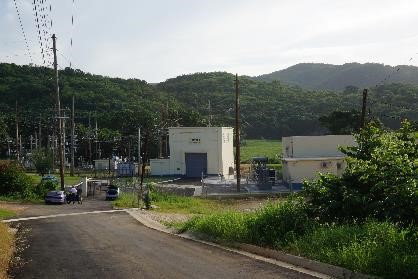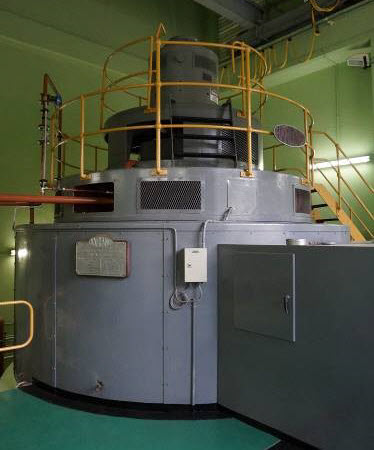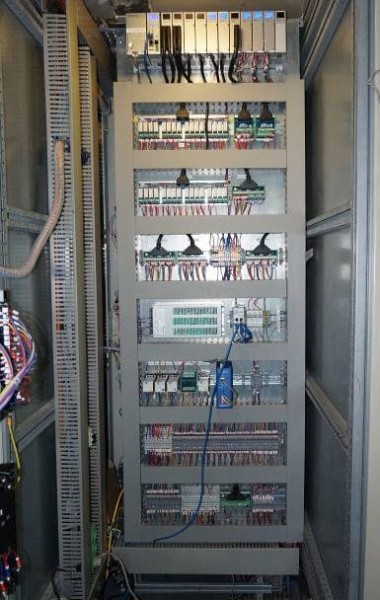Power generation facilities typically operate for decades, so it is not uncommon for the automation systems to become obsolete and difficult to support. This was the case at the Maggotty Hydroelectric Plant operated by the Jamaica Public Service (JPS) Company Limited in Jamaica. As the largest hydroelectric plant on the island, Maggotty is critical to the country’s grid.
 Although turbine A’s running gear at the plant was in good condition, obsolescence of the control system hindered support, maintenance and functionality. In 2014, JPS hired Piedmont Hydro Technologies (PHT) to retrofit a new control system from AutomationDirect on turbine A, the oldest of three units at the plant.
Although turbine A’s running gear at the plant was in good condition, obsolescence of the control system hindered support, maintenance and functionality. In 2014, JPS hired Piedmont Hydro Technologies (PHT) to retrofit a new control system from AutomationDirect on turbine A, the oldest of three units at the plant.
Too many failures and too much downtime, often due to the aging control hardware, plus previous success with PHT and AutomationDirect hardware on other projects, made JPS’s decision to replace their existing control system easy, and it was the most cost effective option. PHT’s scope of work was to replace an aging ABB controller on turbine unit A. The other two turbines at the plant, units B and C, already had newer control systems.
Unit A’s running gear consists of a Francis type turbine and vertical-shaft synchronous AC generator built in 1959. It’s in great condition due to proper maintenance, and it produces 6400 kW at 6900 Vac while turning at 400 RPM. The plant is 88 meters below the Black River, which delivers water via a 2 km fiberglass penstock.

A Productive Upgrade
While most of unit A’s equipment was kept in place, it received a new brain whereby most of the main automation system components were replaced including the main controller and the human machine interface (HMI).
The major part of PHT’s project scope involved designing, installing, programming and starting up a new control system which included an AutomationDirect Productivity3000 advanced controller and an AutomationDirect 15-inch C-More EA9 touch panel HMI. The Productivity3000 included built-in Ethernet for easy communication to the HMI, and to the controllers in unit B and C to better coordinate overall operation of the plant.
 PHT has been using AutomationDirect hardware since 2011, and started using the Productivity3000 advanced controller in 2012, having installed it in over a dozen other customer plants and one of their own power plants. The Productivity3000 is a great fit for controlling the existing hydroelectric plant auxiliaries, exciter, generator breaker and most other equipment in the plant. The reliability of the AutomationDirect hardware and its tech support has been excellent.
PHT has been using AutomationDirect hardware since 2011, and started using the Productivity3000 advanced controller in 2012, having installed it in over a dozen other customer plants and one of their own power plants. The Productivity3000 is a great fit for controlling the existing hydroelectric plant auxiliaries, exciter, generator breaker and most other equipment in the plant. The reliability of the AutomationDirect hardware and its tech support has been excellent.
The AutomationDirect 15-inch C-More EA9 touch panel HMI monitors plant status and provides local control. It also provides viewing of trends and alarms, and access to hundreds of set points. Remote monitoring and control is also available whereby a technician can view status from a control room on the other side of the island. The on-site and remote control is important as it enables generator on/off control, and also adjustment of generator power output depending on the water available and power demanded by the utility customers.
To speed installation, the existing control cabinets were reused with a new Productivity3000 control panel installed. The HMI was also installed on a new panel, and then into the door in place of the obsolete HMI. Most of the I/O was reused, and the new installation just required connections between the new and existing I/O terminal strips. Some field devices and input points were also added for better control and monitoring including vibration monitors, ultrasonic flowmeters and pressure transducers.
Productivity Control
The Productivity3000 controls all the key processes in the generator. It must control turbine speed accurately because RPM and generator output frequency are directly proportional. To control the speed, it monitors a speed sensor and opens or closes a wicket gate, a series of vanes around the turbine, to adjust water flow.
The Productivity3000 also synchronizes the generator frequency to the power grid, and varies the generator excitation to match the grid voltage. A variety of control modes are available depending on power demand. With frequency, phase and voltage matched—the controller closes a breaker to bring the unit online and to supply up to 650 A at 6900 VAC.
PID loops control several processes including the wicket gates which vary the water flowing through the turbine and the generator excitation to match grid voltage. Another PID loop controls water level by measuring intake water level and adjusting turbine power to maintain the water level setpoint. It’s a balancing act as the river flow varies depending on the weather, so controlling the water inflow and outflow is important as it changes the water level (head pressure), which in turn controls power output.
Whether output power is controlled based on water level or set to a constant power level, the end result is a highly reliable control strategy with three independent PID loops in series. The water loop provides the power setpoint; the governor loop sets the wicket gate based on the power setpoint; and the gate (water from river flow) loop controls the gate proportional valve.
With wiring complete, all I/O points were tested followed by functional tests of pumps, valves and other components. Frequency, phase and voltage matching were also checked. With hundreds of HMI setpoints adjusted, set and checked—the unit was started up and the project finished on schedule.
Since PHT installed and commissioned the advanced control system from AutomationDirect over a year ago, it has been working well and the plant’s overall uptime has been excellent. The complete control package has made operation and maintenance easier for the plant’s staff. A good design, good hardware and close collaboration with the customer made this a successful project.
For more information, please see the Digital Control System Upgrade Gives Hydropower Plant New Life in the May 2016 issue of Power magazine, authored by Kevin Edwards, owner and lead engineer at Piedmont Hydro Technologies.
To read more articles about programmable control, click here.
Originally Published: May 2016


